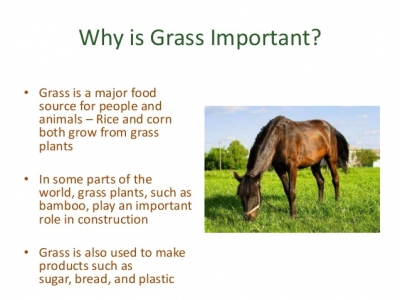
In our cultural context, grass signifies something unimportant and trivial. Since it is everywhere, we seldom notice, or give it due credit. However, our life is closely connected with grass. The rice and the wheat we consume everyday are products of grass. In fact, all the grains and cereals we eat are grasses. Most pasture plants are grass too. The sugar that we use in our tea and confectionery comes from a grass called sugarcane. There are grasses that we use to perfume our homes and other places such as lemon grass and cetronella. The tallest of all the grasses, bamboo, is also of great importance to us.
The most widespread plant family in the world is grass. Most land-dwelling organisms are dependent on grass of their existence. These little plants provide more food than any other family of green plants. In fact, there are about 9,000 kinds of grasses in the world. Most of them grow on land, while some grow in water.
Have you been to a large pasture? The green expanse of grass, sometimes, covers thousands of square kilometres of natural fields. This great sea of grass is called differently in various parts of the world.
In the United States, it is called a prairie or plain and in England, downs. In Australia, these grasslands are called ranges, in Russia, steppes, in South Africa, veldts and in the tropics, savannahs.
Picture Credit : Google

